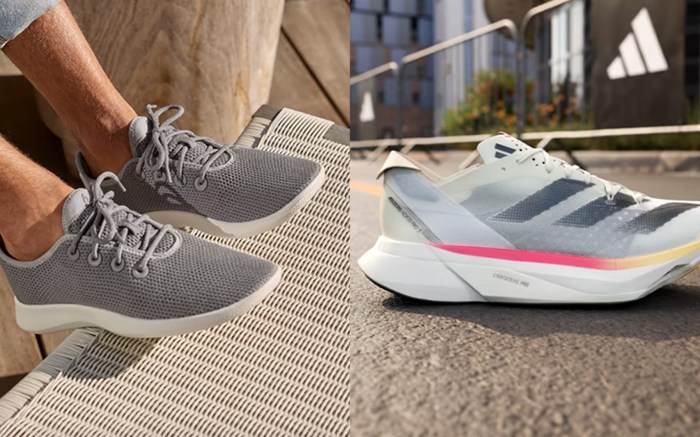Deckers Brands president and CEO Dave Powers reiterated his long-term strategic vision for the company after another record quarter at its Hoka brand in a call with analysts on Thursday evening.
On the company’s first quarter earnings call yesterday, Powers noted that Deckers continues to execute its long-term vision, which includes building Hoka into a multibillion-dollar “major player” in the performance athletic space, growing Ugg by connecting with consumers through “elevated experiences” and a segmented product offering, expanding its direct-to-consumer business through consumer acquisition and retention, and driving international growth through strategic investments.
“We believe Deckers is emerging as a leading creator of compelling consumer connections through highly desirable products that infuse disruptive innovation across both fashion and performance,” Powers told analysts.
Watch on FN
This comes as Hoka continued to drive most of the gains at Deckers in the first quarter. In fact, Hoka saw net sales climb 27.4 percent to $420.5 million in Q1, compared to $330.0 million the same time last year. This is the first time the company’s star running brand eclipsed $400 million in a single quarter, Powers noted on the call.
The executive added yesterday that Hoka’s Clifton and Bondi models continue to be the “front runners” in its assortment, and its recently introduced Mach X is in-line to break the “top 10” styles on its e-commerce site – the predominate segment in Hoka’s direct-to-consumer business.
As for wholesale, Powers noted that Hoka has managed to preserve “high levels” of full price sell-through in the segment and remains one of the “fastest-turning brands” within the majority of its wholesale accounts. This led to the running brand reporting net wholesale sales of $260.8 million in Q1.
Still, Powers said the company is “tightly managing” its wholesale strategy, calling the segment an “uncertain entity” when it comes to inventory. “There’s a lot of estimates that it’s going to be a promotional back half of the year,” the CEO said. “So, the way we’re looking at this is we’re trying to focus on the total consumer opportunity regardless of channel and have inventory available for our direct-to-consumer business if wholesale continues to be a little bit more challenging or promotional.”
Powers added that this thought process is “in-line” with Deckers’ strategy to have direct-to-consumer account for 50 percent of the whole company’s business down the road.
Over at Ugg, Powers addressed the 6 percent dip in Q1 sales, attributing the decline to wholesale accounts in the U.S. accepting shipments later than previous years. The executive added that Ugg revenue is still expected to increase in the low single digits this year despite the temporary impact, driven by international expansion and direct-to-consumer.
The company’s rosy outlook on Ugg comes as Powers said the brand maintains “high levels of brand heat” with more consumers actively searching for the brand. “During the first quarter, online search interest across Europe increased 60 percent versus last year with outsized strength in the U.K. and France,” Powers noted. “The same is true in the U.S., where search interest increased 21 percent versus last year, according to Google Trends.”
“The good news that we’re seeing here is how the consumers are reacting,” the CEO added. “Brand interest is up dramatically, especially in 18- to 34-year-olds. The styles that we have invested in heavy inventory for this coming fall – the Tasman and the Ultra Mini and platform styles – are what sold out last year. We’re getting them back in inventory now and they’re already selling through very well despite the heat waves that are going around across the country.”
Powers also told analysts that Ugg is reducing its SKU count to focus in on its top-performing styles. “Last year at this time, we were over 600 SKUs heading into fall,” he said. “This year, we’re just over 400. And so, we’ve cleaned up the assortment. We funneled our inventory into these key styles that we know there’s high demand for, and we’re getting the marketing behind those styles to really drive a high level of interest and sell-through.”
As for Deckers’ other, less-talked-about brands, Powers said on yesterday’s call that Teva and Sanuk recently reorganized and are undergoing some “incubation” work with the goal of launching “new and improved” versions of both brands. The executive said analysts can expect to see improvement, especially for Teva, going into fiscal year 2025.
“I would say the biggest opportunity right now that we see down the road in the short and long term is Teva,” Powers noted. “We’ve looked at a number of brands externally that we could acquire. And quite honestly, none of them look as good as Teva does – it’s a beloved brand. It’s got a great 30-plus-year history and a lot of heritage product. And it’s healthy in the marketplace. It’s got great margins. And we think that, that is a brand that we can invest in for the long term.”


